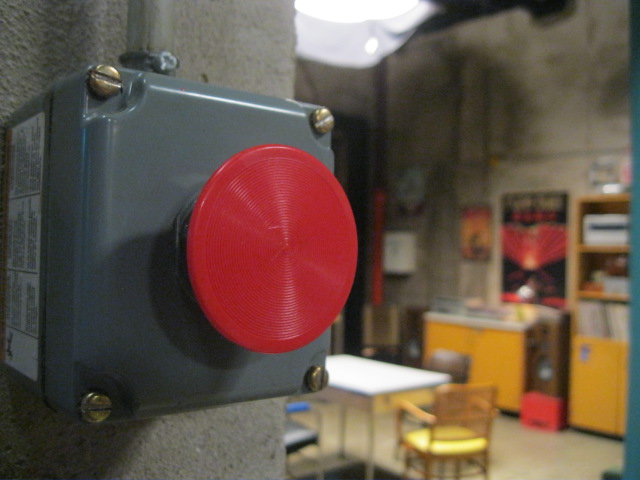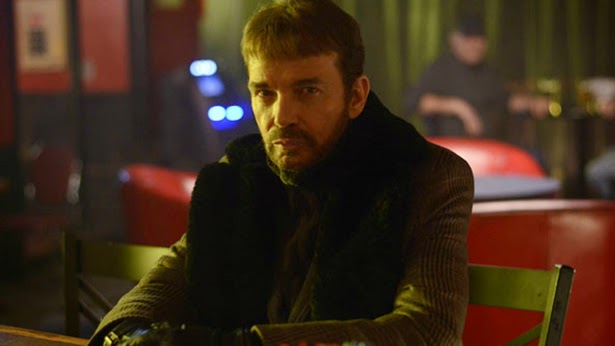 LIVERPOOL, N.Y.–My name is Bill Brioux and I am a 16mm filmaholic.
LIVERPOOL, N.Y.–My name is Bill Brioux and I am a 16mm filmaholic.
I’m here at Cinefest 30, the world’s least glamorous film festival, just off the I-90 in Liverpool, N.Y. This annual gathering features 50 to 60 films each year that were produced 60, 70, even 80 to 85 years ago. Forget digital 3-D, Blue Ray or hi-def. Cinefest is stubbornly old school. It is 200 people in a dark room, half of them still bitter about the introduction of sound. These are people who break out in a smattering of applause when ’30s auteur Ernst Lubitsch appears on screen.
There is something about the purr of a ribbon of perforated celluloid streaming through the gate of a 16mm projector. It is steady and soothing to my ear. When my kids were babies, that middle of the night feeding meant a private screening, with dad warming a bottle, threading a projector (getting that screwed up was trouble) and dad and tot bonding for 20 minutes as a two reeler from the ’30s unfurled. The child quickly fell asleep to the whirl of the projector. Dad got to see “Helpmates” or “Blotto” or All Star Bond Rally.”
The little girl at the end of that bottle turned 20 today. Watching 16mm film was quaint then; today it is positively eccentric.
Yet here in this nondescript suburb of Syracuse a large hotel ballroom is packed with people of all ages watching “Orchids and Ermine,” a 1927 five-reel feature starring Colleen Moore. This delightful flapper–at the time ranked as the No. 1 box office attraction in the world–could pantomime with the best of them, her round face winning and expressive. The film also marked the screen debut of Mickey Rooney (above with Moore), playing, as the Cinefest program notes, “a cigar chomping midget.”
Film historian Leonard Maltin–who has only missed one Cinefest in 30 years–left the screening happy in the knowledge that next time he runs into Mickey Rooney in Hollywood he can tell him, no, he doesn’t steal the picture from Colleen Moore.
The film is silent with very smart subtitles. An added bonus were the many exterior scenes shot on location in New York. The Plaza Hotel–now partitioned up into condos–looks new. The musical accompaniment is live, played by Makia Matsumura, one of three excellent piano and organ accompanists at the festival.
Saturday the show moves down the I-90 to Rome, N.Y., to the late-’20s vintage Capitol Theater, where the big attraction is apparently the organ. Many of the films presented there will be one-of-a-kind prints, some from previously deemed “lost” films, all projected in their original 35mm theatrical format. Earlier in the week at the hotel, TV buffs were treated to a reel of rarities from Gumby creator Art Clokey. Besides a few of the very first Gumby‘s, which were introduced on NBC in the late ’50s on Howdy Doody (TV’s first colour series), rare claymation title scenes by Clokey for the Dinah Shore Buick Show were also projected. The sharp. technicolor print was the very same reel of film used at the time the titles were broadcast over the air. They were pretty arty, almost Norman McLarenesque. That the show aired on NBC is evident by the clay peacock Clokey moulded and animated for each segment.
Earlier in the week at the hotel, TV buffs were treated to a reel of rarities from Gumby creator Art Clokey. Besides a few of the very first Gumby‘s, which were introduced on NBC in the late ’50s on Howdy Doody (TV’s first colour series), rare claymation title scenes by Clokey for the Dinah Shore Buick Show were also projected. The sharp. technicolor print was the very same reel of film used at the time the titles were broadcast over the air. They were pretty arty, almost Norman McLarenesque. That the show aired on NBC is evident by the clay peacock Clokey moulded and animated for each segment.
Cinefest also features several dealer rooms where nerds like myself have tables of stuff they’ve dragged across borders and state lines in hopes of selling and uncluttering our basements. The game is to try and drive back across the border with less than you came in with. This never happens.
It was a bit of a wake up call today to realize that the six dealers in my room–all surrounded by stacks of film cans–all had our noses buried in our laptops. The hotel might have Colleen Moore, but it also has WiFi. Work and deadlines wait for no one, not even in this crazy little time capsule called Cinefest.
Read more about the festival here at this detailed article in the Syracuse New Times. Cinefest concludes Sunday and will take place next year March 17-20.
advertisement






